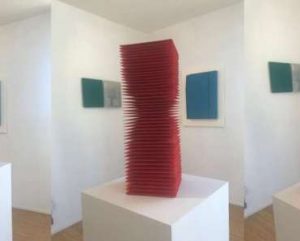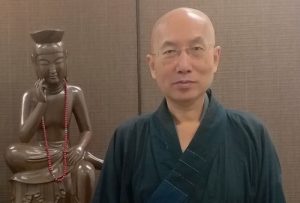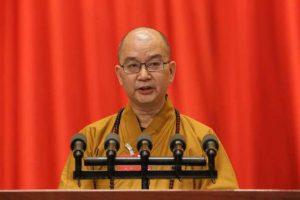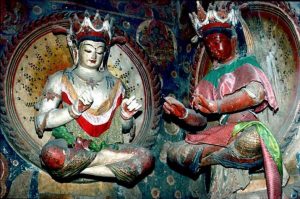This article is published in collaboration with Buddhistdoor en Español, which will publish a Spanish-language version in January 2022.
“Through the medium of film and video The Meridian Trust serves to convey Tibetan values to the rest of humanity, transcending differences of nationality and faith and building bridges between the peoples of the world.”
His Holiness the Dalai Lama
The history of the Meridian Trust and the people behind the scenes have many ingredients of a great story that is worth taking some time to explore. This UK charity has the most extensive archive of Tibet’s unique spiritual and cultural heritage in the world, with thousands of hours of video footage as well as films and documentaries.
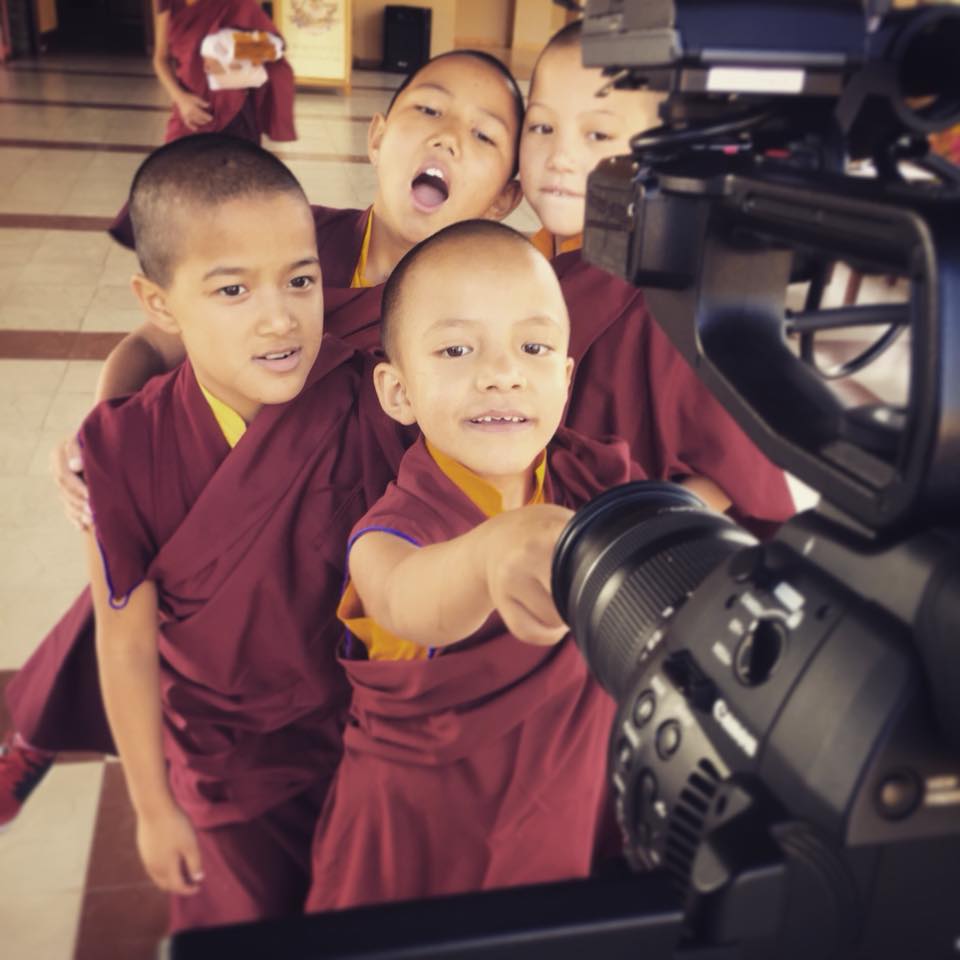
This collective dream started to take shape in 1981, at the impetus of a group of Western Buddhist students led by Geoff Jukes—who worked in the British music industry—and His Holiness the Dalai Lama’s vision to record and preserve Tibet’s unique spiritual and cultural heritage for future generations. This began with the process of filming many extraordinary Buddhist teachers who were very old, to document their treasured wisdom before many of them passed away.
After 40 years of extraordinarily hard work under the inspiration of His Holiness the Dalai Lama, who is the Meridian Trust’s patron, the archive now includes teachings from this first generation of teachers, including Zong Rinpoche, Lama Yeshe, Denma Lochoe Rinpoche, Trijang Rinpoche, and many others. It also contains teachings and ceremonies from His Holiness the Dalai Lama, His Eminence Sakya Trizin, Venerable Thich Nhat Hanh, and complete courses from teachers such as Ven. Namkhai Norbu, Ven. Jetsunma Tenzin Palmo, Ven. Robina Courtin, and Alan Wallace. The list goes on.
This week, an exciting major work of Meridian’s has taken place: to make available the fruits of the project “Bringing the Archive Home,” to digitally upgrade the entirety of its video archive, giving Tibetans and Buddhists across the world direct and free access to the complete collection of more than 2,000 hours of Tibetan Buddhist and cultural film content.
Greta Jensen and Kaska Phuntsok represent the inspiration, passion, and remarkable skills that made this exceptional task possible, and they will guide us in this journey through the history of the Meridian Trust.
Origins
Greta Jensen (b. 1942 in England) was part of the team that first began with the Meridian Trust in the 1980s. Her résumé is truly impressive: she is a human and environmental resource development consultant; she worked widely in India with an NGO that she founded and directed until 1997. Subsequently, that she worked as a freelance consultant helping a wide range of international NGOs worldwide.

Buddhistdoor Global/Buddhistdoor en Español: Could you share with us the origins of the Meridian Trust and your first association with it?
Greta Jensen: It was Geoff Jukes who had the inspiration and vision to video visiting eminent Tibetan masters who were renowned for their wisdom in Tibet, including, of course, His Holiness the Dalai Lama. He began doing this in the late 1970s. At about the same time, I met my Tibetan teacher, Kyabje Zong Rinpoche, when he was giving extensive teachings at a Dharma center in Los Angeles. There they were also beginning to video visiting teachers. Having always been a keen photographer, I took on some of the videoing. I also took my Super 8 film camera with me when I visited my teacher’s monastery in southern India. Then, I found myself videoing at Dharma centers after I returned to the UK. I think Geoff initially approached me in 1984, and my first experience of filming the Dalai Lama was when he asked me to join a crew to film the visit of His Holiness to the UK, specifically in Coventry and Glasgow. When Geoff decided to set up a charity in 1985, he asked me to be one of its first trustees, and so the Meridian Trust was born.
BDG/BDE: And you came up with the name?
GJ: All those involved with Meridian at that time were asked to think of a name that spoke to Geoff’s vision of the trust being instrumental in bringing the Dharma to the West. I suggested Meridian as symbolic of the interface between East and West.
BDG/BDE: What was the Lama Project?
GJ: The Lama Project was undertaken by the Meridian Trust at the urgent request of His Holiness the Dalai Lama in 1987. It set out to archive the teachings of eminent Tibetan Buddhist teachers on video and succeeded in recording the teachings of masters of the Buddhist and Bon traditions, many of whom have now sadly passed away. Filming the last of these elderly lamas while they were still among us became a priority for the Meridian Trust over the last 20 years.
Meridian also trained Tibetan teams in video production, and filming equipment was provided in three main areas where refugees are settled in India. Within five years, more than 600 hours of completely unique video recordings of these lamas were made.
Today, digitized footage can be made into DVDs, stored on hard drives, streamed over the internet, and much, much more. It also means that the people who will benefit from it most—including the monasteries where the material was first shot and the Tibetan community worldwide—will have direct access to this precious archive.
All at the Meridian Trust were honored to offer a copy of this archive to His Holiness the Dalai Lama on 28 January 2009 in Dharamsala.
BDG/BDE: You filmed the Dalai Lama’s first Kalachakra initiation in Europe, held in Rikon, Switzerland, in 1985, and other teachings by him. Could you share some of your impressions from those times?
GJ: Filming the Kalachakra in the main tent at Rikon was, for me, a major undertaking. I had been at a Kalachakra initiation previously in Madison, Wisconsin, where I had volunteered to help prepare the site. But I was never very close to His Holiness, so Rikon was special as we were very close to the stage. Although I can be a good organizer, I can also be a bit bossy, so managing a crew of five, plus four production assistants, was a steep learning curve! Nevertheless, it was an extraordinary privilege to be part of the entire ceremony. I remember on one day, during the creation of the Kalachakra Mandala, there were times when His Holiness was involved in setting out the template with the monks of Namgyal Monastery. It was a very special, almost intimate time as there was no audience, so I was careful to keep a respectful distance, but on this occasion, tugging on a rather fat sound cable, I became conscious that it was stuck somewhere and I would need to go around the throne, upon which His Holiness later sat, to get closer to the mandala to free the cable. As I reached behind the throne, I came face to face with His Holiness standing with a bunch of cables that he had been busy untangling. Upon seeing me, he gave a big smile and said, “Oh, here you are” as he handed me the now freed sound and other cables!

BDG/BDE: One of your first research assignments with the Meridian Trust in 1985 took you on a three-month tour of Tibetan settlements in India. It must have been quite a unique experience. What experiences do you recall from this event
GJ: Filming the “1985 Time Capsule” as I refer to it was a unique experience. Meridian was requested by Phunstog Wangyal of the Office of His Holiness in London to send a crew to India to video as many different aspects of Tibetan life in exile as possible. Geoff asked me and our technical whiz, Tony Pitts, to undertake this assignment, which we were both very excited about. Video equipment was not very sophisticated at that time, but Geoff made sure we had the best and the lightest available.
We began our trip in the refugee settlement of Doeguling in Karnataka, home to the re-established Ganden and Drepung monasteries—once two of the largest monasteries in Tibet. We arrived in time to cover the very colorful and joyful Tibetan New Year (Losar) celebrations, with offering-laden altars and beautiful butter sculptures in homes and prayer halls. Everywhere, laypeople with white greeting scarves were lining up outside the homes of eminent teachers to make offerings and receive blessings. This was followed by the Great Prayer Festival (Monlam Chenmo), with exquisite chanting emanating from the prayer halls almost around the clock. Monlam was also graduation time for those who had studied for the full geshe degree. We were privileged to film the first Western student to achieve this, George Dreyfuss (Sangye Samdup), during his final debates before eminent scholars. Exciting in retrospect was the chance to interview Nicky Vreeland—now the abbott of Rato Monastery—and to film him during one of his first tutorials.
From Doeguling, we traveled to three other refugee settlements in Karnataka. In Dharamsala, we were somewhat overwhelmed by all that we were able to film. From interviewing His Holiness, to filming the first National Assembly of the Tibetan Women’s Association, several days coverage of the Tibetan National Assembly, and interviews with key officers of the Central Tibetan Administration.
We also filmed at Geden Choeling Nunnery, the Tibetan Institute of Performing Arts, the Tibetan Medical Institute, the Library of Tibetan Works and Archives, the School of Dialectics, a thangka painting school and wood-carving center, Delek Hospital, and both Upper and Lower Tibetan Children’s Villages.
Finally, we filmed His Holiness giving a teaching for children from the Tibetan Children’s Villages and an empowerment of the Eight Manifestations of Guru Rinpoche. As you can see, it was an action-packed agenda and a complete immersion into Tibetan culture in exile!
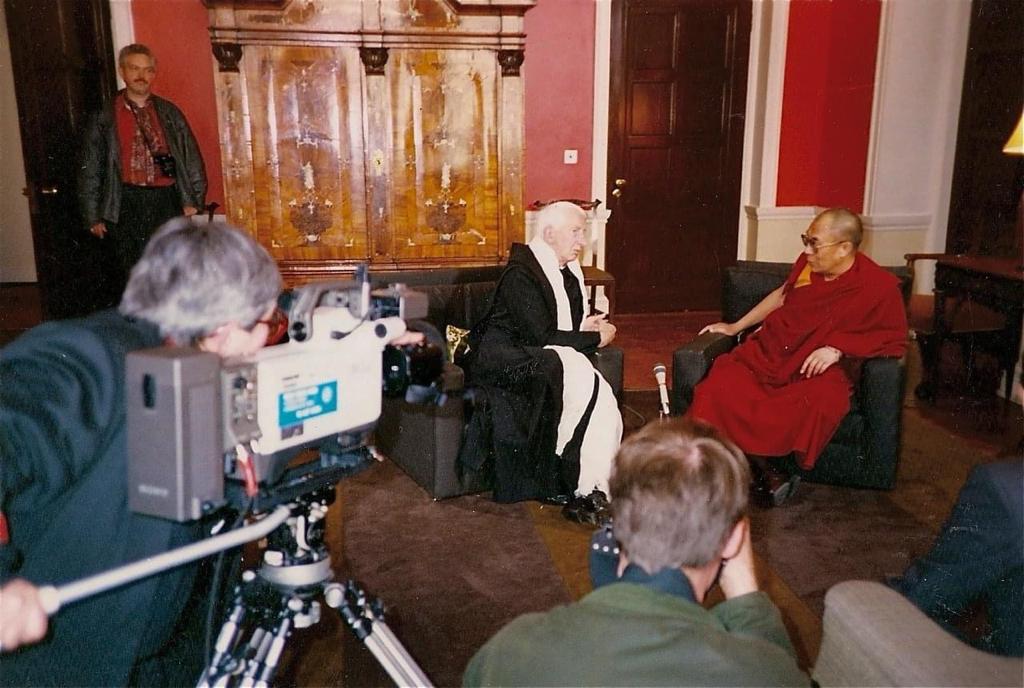
BDG/BDE: What has being part of this project meant to you? And how do you envision the future of the Meridian Trust and its impact on the world?
GJ: Being part of the project has meant a lot to me, but its meaning has changed over the years. At first, I was perhaps more engaged with preserving Tibetan culture for future generations, especially as I regularly traveled to the various refugee settlements in India as part of my work with ApTT—later ApTibeT. There I was exposed to life in the re-formed monasteries and nunneries in exile, and saw the importance of imparting the precious and pure Dharma to a younger generation.
Filming His Holiness when he came to Europe, and especially the UK, was made possible through the generosity of Geoff Jukes and was always a special privilege for Meridian. As a crew, we strived to become invisible during talks and teachings and meetings with dignitaries, while conscious that we were effectively visual ambassadors, there to spread His Holiness’ messages far and wide.
As a founding trustee, my personal vision for Meridian is now far broader than when we started out. I strive to keep a thread alive between the beginning of Meridian, when we were sometimes the only organization with the capacity to cover His Holiness’ visits, to the current situation with countless Buddhist-related organizations filming their own interactions with a host of newer teachers, some Tibetan, and increasingly, many trained Westerners, with some of whom we are building creative and hopefully lasting relationships. An example is our collaboration with the Library of Tibetan Works and Archives in Dharamsala on the recently completed “Bringing the Archive Home” project. Hosting guest archives, such as the wonderful visual treasures of the Tibet Foundation, is another example of fruitful collaboration.
As our new Meridian Trust website is launched, it is my personal hope that the opportunity to expand our capacity and impact will support the agendas that His Holiness increasingly emphasizes. For example, the Nalanda tradition, secular ethics, value-based education (such as SEE Learning), environmental regeneration and climate change, and increasing Meridian’s reach into East Asia, specifically to Taiwan and China.
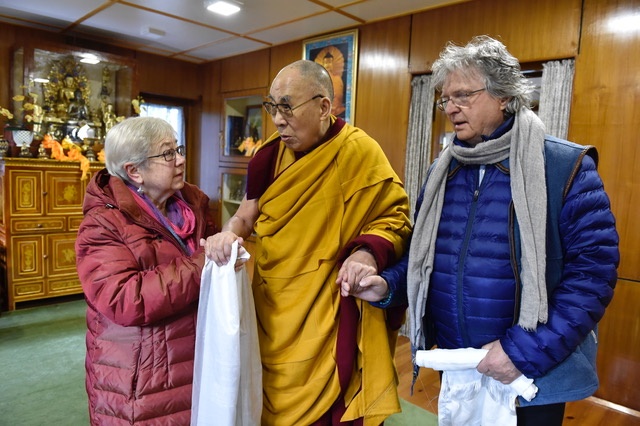
Present: Expanding the Meridian Trust to a global stage
Kaśka Butkiewicz-Phuntsok (b. 1977 in Poland) excels in many different fields, and for the last nine years she has been working at the Meridian Trust as the main filmmaker, photographer, digital archive manager, and projects director. She observes:
I like to combine fields that do not appear to be obvious at first glance but are connected. Filming and photography are similar fields, they help improve my photographic memory, which is particularly useful in managing the archive. Because I have been to Tibet and India, I am familiar with Tibetan culture and places, it makes it easier for me to identify what I am seeing in old footage. Sometimes we have had tapes without any information, so this has helped me describe and catalogue.
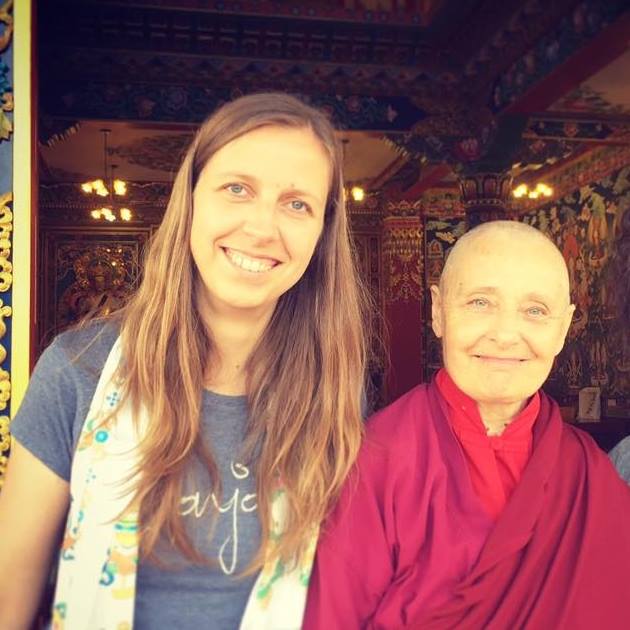
Kaska is passionate about her work and feels very fortunate:
It’s amazing to be part of the Meridian Trust. The old archive is so beautiful and so precious. I really appreciate the hard work of so many people for over 30 years. It’s like a long relay race, and we are now taking their work to another digital and global stage.
BDG/BDE: This year, you and your team have been developing the new website and digitizing the entire file collection. How is this complex process going?
Kaska Phuntsok: At this moment, we have 1,169 video clips on our website. Some of them are 30 minutes long, but some are up to three hours. More than 700 clips are soon to be linked to the new website. Roughly 200 clips are waiting to be edited. We spent the last two years cleaning and editing our old archive with two Tibetan editors: Jamphel Sherab and Karma Phuntsok in India in LTWA (Library of Tibetan Works and Archive in Dharamsala). It was incredibly challenging, particularly during the pandemic when India went into lockdown. Power cuts during the winter and monsoon season in India also don’t help. The audio-visual department of the LTWA, Dolkar Tsering, and Geshe Lhakdor were extremely helpful—without them, it would have been impossible.
We spent a lot of time discussing and designing the new website. With the help of our friends from “Thrive Now Design” in the UK, and “We Add Motion” in Denmark, we have tried to make the website easier to navigate and as user-friendly as possible.
It has definitely been a challenge because of the vastness of the material. For example, we have contemporary teachings, retreats, archival footage of the First International Conference of Buddhist Nuns, now known as Sakyadhita, Namkai Norbu Rinpoche’s journey to Kailash from 1988, the Dalai Lama’s tours and Kalachakra in Switzerland filmed in great depth.
We are very excited and are heading into the second phase—beta testing—by people who are not part of Meridian. They will test our new website performance.
BDG/BDE: The Meridian Trust archive is vast and as a result may be quite intricate for newcomers to explore. Do you have any guidelines to help navigate this amazing treasure of Dharma teachings and films?
KP: On the front page, our collections will be available based on interest. For example, talks, retreats, courses, source collections, and translations. We have multiple teachings translated into Spanish. We also have a browser for exploring through categories such as: source collections, ceremonies, talks and dialogues, venerable masters, and culture, or by a teacher’s name. We hope this will help to make navigation easier.
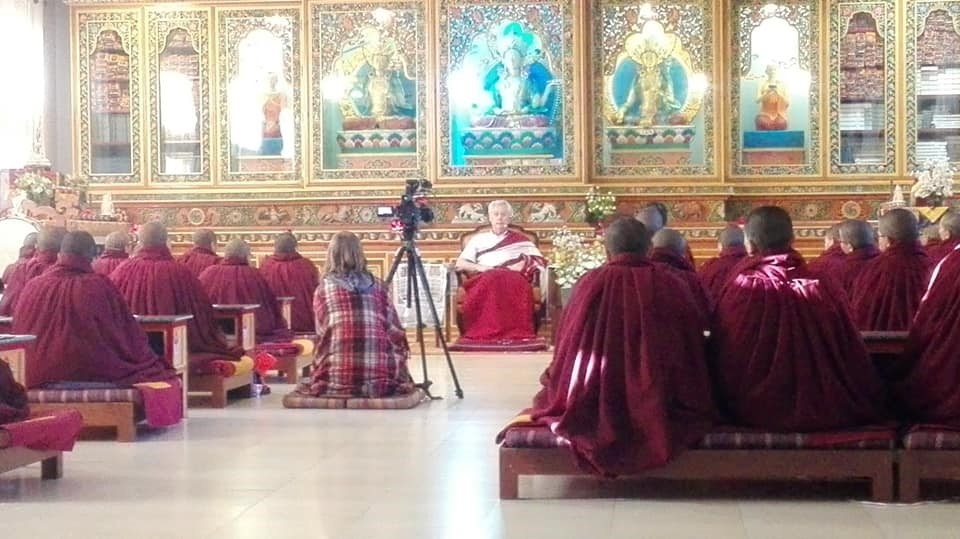
BDG/BDE: How can people contribute to the development of the Meridian Trust?
KP: Our content is available for free. We do not charge and we rely only on donations. Donations are extremely helpful and highly appreciated. They allow us to improve the website search engine, pay for a bigger host platform for our video files, and help us to keep filming and sharing Buddhist teachings.
BDG/BDE: How do you envision the future of the Meridian Trust and its impact on our world?
KP: We would like to reach as many people as possible all over the world who are interested in Tibetan Buddhism and Tibetan culture. We wish to continue filming and sharing Dharma teachings.
Videos from Meridian Trust
A Buddhist Monk – 11 Days in England – H.H. the Dalai Lama
Change Your Mind, Change Your Life (1 of 5) – Ven. Jetsunma Tenzin Palmo
Peace & Discipline in mental stress according to Tibetan medicine – Dr.Trogawa Rinpoche
The Kind Heart – Rangjung Neljorma Khandrola
A Summary of the View, Meditation, and Conduct of Dzogchen (1 of 2) – B. Alan Wallace
Pain, Suffering & Happiness – Ven. Thich Nhat Hanh
See more
Related features from Buddhistdoor Global
Buddhist-Influenced Filmmaking in an Extraordinary Time: An Interview with Gaetano Maida
Bhikkhunī – Buddhism, Sri Lanka, Revolution: A Film on the Epicenter of Theravada Female Ordinations
The Human Monk: A Review of the Critically Acclaimed Documentary The Departure
Butsuzo in the 21st Century: Promoting the 1,400-year-old Japanese Tradition of Buddhist Sculpture on Social Media
Related news reports from Buddhistdoor Global
Sublime Wanderings: Buddhist Scholar Plans Video Series to Document the Pilgrimage Path of the Buddha
The Inner Revolution: New Documentary on Wisdom and Transformation Due Out this Year
Female Tibetan Filmmaker Wins Three Awards at My Hero International Film Festival





